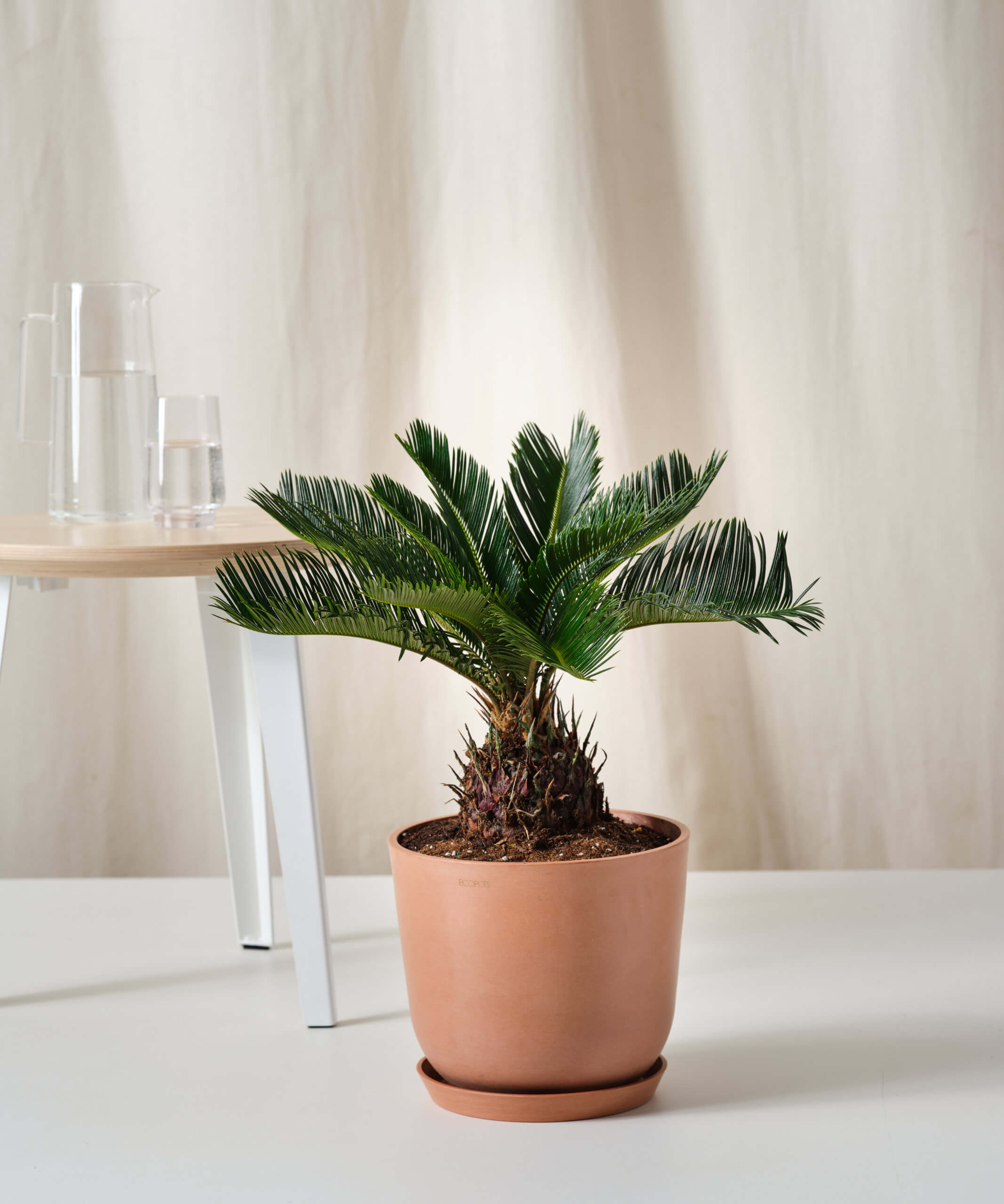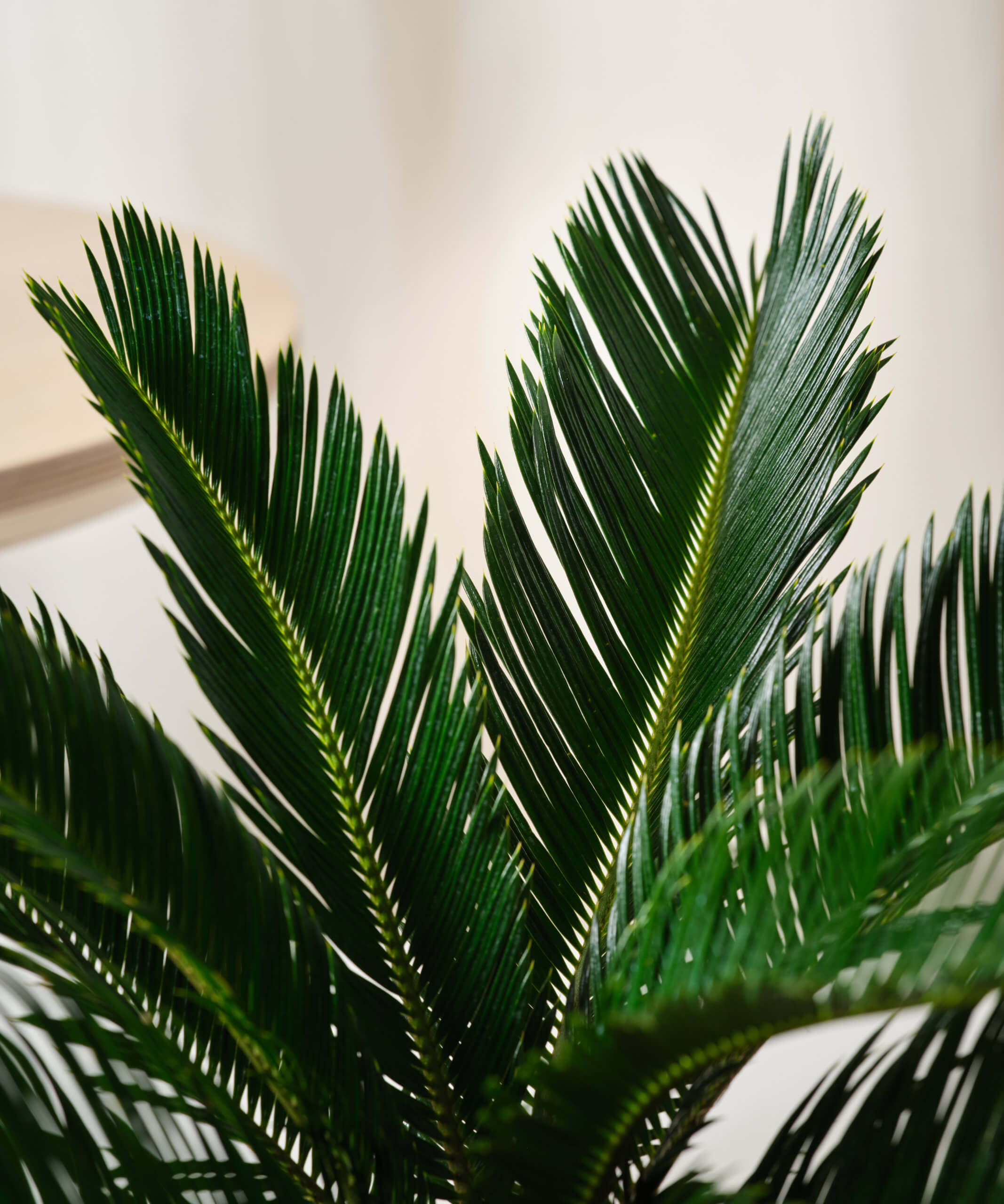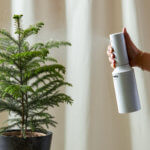How to care for your Sago Palm
Use these instructions to care for a Sago Palm. This guide will tell you how to water a Sago Palm; its light, temperature, humidity preferences and any additional care it might need to help it grow.
Japanese Sago Palm
Your Sago Palm prefers bright indirect light to direct sunlight. Choose a south- or west-facing window, or supplement with a grow light to encourage growth and a deep green color.
Water your Sago Palm when 75% of the soil volume is dry. Water thoroughly, allowing it to soak into the soil until it drips out of the drainage hole. Remove excess water that collects in the saucer.
Sago Palms do fine in average household humidity.
Maintain a temperature between 65-75°F. If moved outdoors for the summer, Sago Palms don’t mind the heat but will need to be watered more frequently.
Water your Sago Palm once in the spring and once in the summer. Use a general purpose houseplant fertilizer or one formulated specifically for palms, diluted to half-strength.
Sago Palms are considered highly toxic to pets and humans if ingested.
Aside from bright light and occasional fertilizer, your Sago Palm doesn’t require much care. It is susceptible to root rot, especially in the fall and winter months, so take care not to overwater it. The plant naturally sheds its lower leaves as it grows. As these leaves begin to yellow, they can be removed with a sharp cutting tool.















